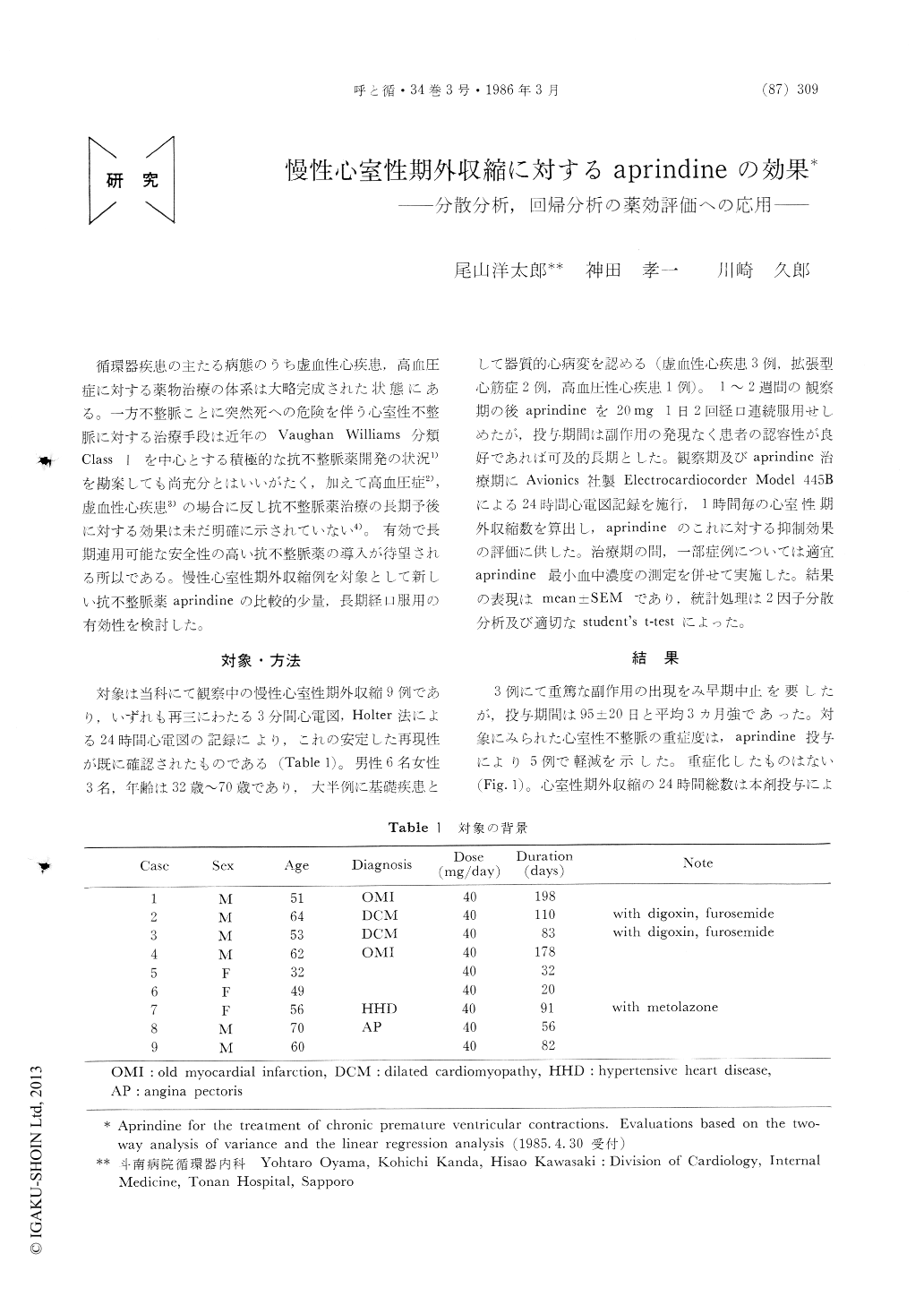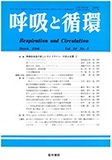Japanese
English
- 有料閲覧
- Abstract 文献概要
- 1ページ目 Look Inside
循環器疾患の主たる病態のうち虚血性心疾患,高血圧症に対する薬物治療の体系は大略完成された状態にある。一方不整脈ことに突然死への危険を伴う心室性不整脈に対する治療手段は近年のVaughan Williams分類Class Ⅰを中心とする積極的な抗不整脈薬開発の状況1)を勘案しても尚充分とはいいがたく,加えて高血圧症2),虚血性心疾患3)の場合に反し抗不整脈薬治療の長期予後に対する効果は未だ明確に示きれていない4)。有効で長期連用可能な安全性の高い抗不整脈薬の導入が待望される所以である。慢性心室性期外収縮例を対象として新しい抗不整脈薬aprindineの比較的少量,長期経口服用の有効性を検討した。
Nine patients with chronic premature ventricular contractions (PVCs) of various cause were subjected to long term (95±20days) oral administration of low dose aprindine (20mg twice daily). Frequen-cies of PVCs registered on 24 hours Holter DCG were significantly suppressed by this agent from 14593±4098 to 4176±1914 (p<0.01). Two-way analysis of variance and regression analysis disclosed aprindine to be effective as antiarrhythmic drug in 5 to 8 cases out of 9 (55.6 to 88.9%). Minimal plasma concentration of aprindine under steady-state was relatively low (0.49±0.05μg/ml) and therefore no neurological toxicity was recognized. Hepatitis with jaundice and agranulocytosis, both are considered to be idiosyncratic, were observed in 2 and 1 cases respectively. In conclusion, low dose of aprindine is effective in suppressing PVCs of various causes. Because of high incidence (3/9) of doseunrelating idiosyncratic reactions, blood cell counts and blood chemistry should be closely moni-tored during treatment.

Copyright © 1986, Igaku-Shoin Ltd. All rights reserved.


